Have you ever imagined spending the summer in a place that’s got it all? Beautiful sea, amazing blue lagoons, challenging peaks, fairy woods, mystic hills, snow under the hot summer sun and so many hidden wonders you can’t even count? Well, Romania is such a place.
Scarisoara Cave - Apuseni Monuntains
http://www.itim-cj.ro/Esir/ESIR%20field%20trip.pdf
There is no place in Romania that doesn’t hold a gem waiting to be discovered and yet we know so little about these wonders. Some things can’t be described in words and the writer needs real images to help her expose the beauties that stole her heart so long ago. Each place has a legend, something from illo tempore that breathes to the present and makes the traveler step carefully on each path.
Did you know that the Carpathians hold the largest ice cave in Southeastern Europe and the second largest in the world after the Eisriesenwelt Ice Caves in Austria? This cave is on Romanian territory, in the county of Bihor, part of the mountain chain in Carpathians called the Apuseni Mountains. Situated in the Apuseni Mountains almost 40 km away from the town of Campeni, in the North-Western part of the district of Alba, in the commune of Garda de Sus, Scarisoara Cave is one of the largest ice caves in Romania (it holds the world’s second largest glacier; the largest in the world is Dobsina ice cave, in Slovakia, depending on the source ) .
One cannot say precisely the date when the cave was discovered, but it is mentioned in 1863 by Adolt Schmididi, an Austrian geographer who made the first observations regarding the cave and also its first map. Declared a natural monument and a speleological reservation, the cave (situated at 1150 m altitude) is famous for its glacier that is older than 3000 years. The area of the glacier is 5500 square m and the ice layer alternates between 26 and 37 m in thickness.
Scarisoara Cave is 750 m long, but only 250 m of it may be visited. It’s 110 m deep, the entrance shaft is 50 m in diameter and 48 in depth and the access for tourists is done through a metallic ladder.
While in the cave you’ll probably encounter bats and some small ice beetles called Pholeuon prozerpinae glaciale. Although a Rupicapra skeleton was discovered in the ice, there are low chances that you will encounter other animals in the cave.
Cave description
 |
| Ocoale – Coteţul Dobreştilor karst system (after RUSU et. al., 1970). |
The Scărişoara Glacier Cave (Fig. A, B) opens with an elliptical, funnel shaped shaft of impressive dimensions: up to 60 m in diameter and 48 m in depth.
The bottom of the shaft is covered with a thick layer of snow, which does not melt even in the hottest summers.
The cave has many sectors that have different names. Thus, right after the entrance one may see the Big Hall and afterwards The Church where there are more than 100 ice stalagmites, The Church being in fact the main touristic attraction. To the left of this hall, walking through a 70 m long gallery, one can reach both The Great Reservation and The Small Reservation. Visiting these sections is allowed only for scientific goals and with the agreement of the Speological Institute “Emil Racovita” in Cluj. The Gallery Maxim Pop lies at 105 m underground, which is the maximum depth of the cave. The other two sections of the cave are The Cathedral and Sanziana’s Palace, but they don’t contain ice.
The cave was believed to develop in massive reef limestone of Ladinian (Middle Triassic) age. The authors estimated the age of the limestone by using paleontological and structural elements. BUCUR & ONAC (2000) have recently sampled the limestone in different point of the cave and studied by means of microfacies. The association is characteristic for the Upper Jurassic, most probably Lower Tithonic.
The cave entrance is located in the western wall of the shaft and has an imposing arch 24 m high and 17 m wide. Beyond is the “Sala Mare’s” (Big Room’s) ice floor, a 3,000 m2 perfectly horizontal surface, with just four massive conic ice formations. One is on the left side and the other three are attached to each other near the wall opposite to the cave entrance. Usually, these form large ice columns. During springtime, ice stalactites form on the room’s ceiling, but their existence is ephemeral. To the north, there is a second opening towards the surface Towards the NW, the horizontal floor ends with a steep slope dipping 8 m that can be descended by steps carved into the ice leading into a second room. Local residents have named this area “Biserica” (The Church). Here, ice speleothems dominate the underground scenery.
On sunny days, the tips of the stalagmites shine in the reflected light from the snow accumulated at the bottom of the shaft, creating the impression of gigantic lighted candles. The “Biserica” continues with a narrow side passage lacking ice formations. At its end is a succession of three small circular-shaped cavities with walls bearing traces of water flow.
Another ice slope can be descended on the left side of the Sala Mare before entering the “Biserica”. At its base, a narrow space between the glacier and the cave’s limestone wall (crevice) formed due to wall’s higher temperature. The shaft, the Sala Mare, and the “Biserica“ are parts of the tourist section of the cave and are toured without caving gear. On the other two sides of the Sala Mare, the space between the ice and the limestone walls allows access into the deep parts of the cave that have been declared scientific reserves. Visiting these areas requires a minimum of underground climbing experience, as both passages are either vertical or almost vertical cliffs.
The Rezervaţia Mică (Small Reserve) is on the northern side of the Sala Mare and can be entered by descending a 15 m vertical cliff (Fig. 5A), along which the ice stratification is visible. Two other crevices form at the side edges of the ice cliff near the limestone walls, which both descend steeply and almost reach the base of the ice block. In the central part of the room, not far from the ice block, a field of ice stalagmites forms. They differ from the ice stalagmites found in the “Biserica” in that they do not appear as massifs but as isolated stalagmites. Beyond these, the cave floor is partly covered by a calcite crust and rises abruptly towardsa short passage called “Palatul Sânzienelor” (Sânziana’s Palace) in which there are only calcite speleothems. There are still two unexplored chimneys at its end, which could be very important in the depicting the genesis of the Scărişoara Glacier Cave.
The entrance to the Rezervaţia Mare (Big Reserve) is much larger than the previous one and is located on the southern side of the Sala Mare. Within this part of the cave, the largest rooms are found (20 to 45 m wide and up to 20 m high). Here the ice forms a steep slope to a depth of 90 m below the surface. This passage was named Galeria “Maxim Pop” (the Maxim Pop Passage) in the memory of the leader of the 1947 expedition. On the horizontal bedrock floor in the central part of the Rezervaţia Mare is another field of ice stalagmites similar to the ones in the Rezervaţia Mică. Beyond this area, the cave floor rises abruptly and is covered by huge collapsed limestone blocks. On top of these, large calcite domes have formed.
Thus, this part of the Rezervaţia Mare is called “Catedrala” (The Cathedral). At the end of "Catedrala", a narrow passage opens through agrate of stalagmites and enters the Coman Passage. Besides being well decorated, this passage reaches the cave's maximum depth of -105 m (RACOVIŢĂ & ONAC, 2000).
Based on topographic surveys performed on 1965, the total length of the Scărişoara Glacier Cave is 700 m.
Climate
From a climatic point of view, the cave has a complex structure, with four meroclimatic zones (RACOVIŢĂ, 1984): a transition meroclimate in the entrance shaft, a glacial zone in the vicinity of the ice block, a periglacial one at certain distances from the block, and a warm meroclimate in the non-glaciated parts of the cave. The repartition of these meroclimates is reflected by the thermal pattern of the cave: while in Great Hall the mean annual temperature is around –0.9ºC, it increases to –0.2ºC in the Great Reservation and 4.3ºC in the Coman passage.
Air circulation is one of the most important factors for ice dynamics in the cave (Fig. 6). We can distinguish between two seasonal types of circulation: summer and winter, respectively.
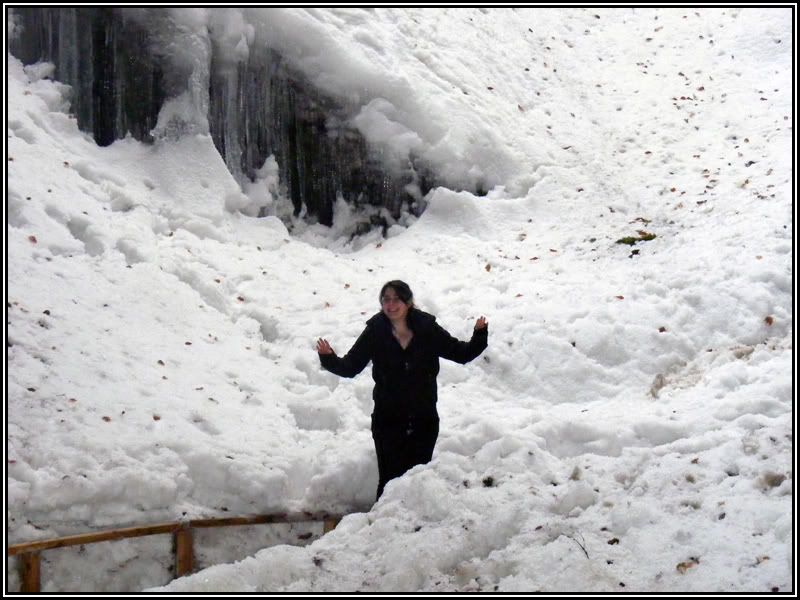 |
| Snow in may at the Scarisoara Cave entrance |
Air circulation is one of the most important factors for ice dynamics in the cave (Fig. 6). We can distinguish between two seasonal types of circulation: summer and winter, respectively.
During winter, airflow, triggered by the high density of external cold air, is directed from the surface downward into the cave. The cold airflow first reaches the Big Hall, from which it descends into both the Little and the Great Reservation. The cold air replaces the warm air from the cave; the warm air rises is “pushed out” along the ceiling of the cave. This type of circulation (lasting for approximately 5 months between November and April (RACOVIŢĂ & ONAC, 2000), transports large quantities of cold and dry air in the cave, leading to a diminution of humidity (less than 80%).
Since the cold air in the cave is denser than the external air in the summer, there is no air mass exchange between the cave and the outside (equilibrium occurs between the outside air and inside air of the cave). Differences in temperature (and thus the air density) between various parts of the cave cause two convective cells between the Big Hall and the two reservations. Cold air maintained by the overcooled walls and the ice block, flows down into the reservations replacing the warm air. This warmer air rises and follows the ceiling of the cave, but as it reaches the Big Hall’s walls it cools down, thus maintaining the convection.
This type of circulation is occurs from May until October. In April and October, rapid changes between summer and winter types of circulation occur, as temperature varies around 0ºC. Due to the ventilation system, the Scărişoara Ice Cave is subdivided in three distinct parts, called meroclimatic sectors. These sectors are differentiated through the physical (air) parameters and the types of speleothems that develop in each of them. The glacial sector covers the Great Hall, where external influences are the most intense and the ice forms a compact block; the periglacial sector covers the three halls surrounding the ice block, where external influences are reduced and ice stalagmites develop; the warm sector characterizes the farthest parts of the cave, where external influences are practically eliminated and the speleothems are exclusively calcitic.
Since the cold air in the cave is denser than the external air in the summer, there is no air mass exchange between the cave and the outside (equilibrium occurs between the outside air and inside air of the cave). Differences in temperature (and thus the air density) between various parts of the cave cause two convective cells between the Big Hall and the two reservations. Cold air maintained by the overcooled walls and the ice block, flows down into the reservations replacing the warm air. This warmer air rises and follows the ceiling of the cave, but as it reaches the Big Hall’s walls it cools down, thus maintaining the convection.
This type of circulation is occurs from May until October. In April and October, rapid changes between summer and winter types of circulation occur, as temperature varies around 0ºC. Due to the ventilation system, the Scărişoara Ice Cave is subdivided in three distinct parts, called meroclimatic sectors. These sectors are differentiated through the physical (air) parameters and the types of speleothems that develop in each of them. The glacial sector covers the Great Hall, where external influences are the most intense and the ice forms a compact block; the periglacial sector covers the three halls surrounding the ice block, where external influences are reduced and ice stalagmites develop; the warm sector characterizes the farthest parts of the cave, where external influences are practically eliminated and the speleothems are exclusively calcitic.
The ice speleothems
The ice block formed by the freezing of the water that was supplied from two sources. The first source is the rainwater that infiltrated through surface fissures in the limestone or through the chimney located close to the entrance in the Church. The second source is partial thawing of the snow accumulating at the entrance shaft bottom and that of the surface ice layer from the Great Hall floor.
The ice block consists of 0.5 to 15 cm thick sandwiched ice layers and mineral and organic impurity layers, usually thinner, of only 2 – 7 mm. The organic layers form during the summer when the temperature of the underground atmosphere increases slightly above zero. Consequently the level floor of the Great Hall is covered by a water film approximately several centimeters thick, but deeper in front of the portal. Limestone dust formed from the weathering of the wall due to alternative freezing-thawing is deposited at the base of this film of water. The soil and plant remains are brought in by water flowing down the shaft walls. The water film freezes in the following winter, forming a new ice layer which ultimately encloses all sediments.Therefore, the elemen tary stratigraphic unit corresponding to one year in the primary structure of the ice block is represented by an ice layer and an impurity layer. The ice stalagmites are formed by a mechanism similar to the one of calcitic speleothems, the difference being that the seeping water freezes instead of depositing calcium carbonate. Both speleothem growth and their overall morphology are controlled by air temperature and drip frequency. The amount of ice deposited on stalagmite tips depends on how fast the water freezes. When this process is fast, water drops freeze almost instantly, causing an increase in height. When the process is slow, water drops first ooze down the sides of the stalagmite, contributing mainly to an increase in thickness. This also explains why most ice stalagmites have the upper part expanded in the shape of a warclub.
The ice stalagmites are made up of hexagonal ice crystals whose growth is governed by the law of geometric selection. According to this law, the only crystals that develop unrestrained are those growing perpendicular to the column axis or disposed radial around the stalagmite tip. In the stalagmite mass, crystals form concentric layers of several centimeters thick, but it is not yet known how such layering is initiated. The main factor in the dynamics of ice speleothemes (i.e. ice stalagmites) in Scărişoara Ice Cave is the dripping water which, depending on temperature, can act as a favorable element for both the growing and melting of ice (PERŞOIU, 2004). Between January and April these speleothemes had a growing phase, more important in March and April, while between April and December they went through a melting phase. The ice block has a more complex dynamics, being influenced by both external and internal factors.
Dripping waters and heat transfer through conduction in summer determines the melting of ice at the surface of the ice block and development of a shallow lake (up to 20 cm in depth). In addition, the warm water of this lake (directly heated by sunshine) contributes to the general melting of the ice block, both on the top and on the sides. Cold air, with water vapor content frequently below 90 %, enters the cave in the winter months leading to rapid ablation of the surface of the ice block. The geothermal heat flux melts the base of the ice block, leading to the development of sub-glacial tunnels. Later these tunnels are enlarged through sublimation processes by the same cold and dry air circulating under the ice block. This cold air is also responsible for the onset of ice development in late autumn (October-November). During this period, the rapid infiltration of cold air regulates the freezing of the water on top of the ice block and thus its thickness. Scărişoara Ice Cave stands out among the other great ice caves in the world due to the fact that it hosts not only varied ice speleothems in a relatively restricted space, butalso a large selection of calcite speleothems. Concentrated mostly in the Cathedral and in the Coman Passage, these speleothems are represented by stalactites, stalagmites, columns, domes, draperies, clusterites, flowstones, and gours, to which are added the bizarre cave pearls.
How come the ice never melts?
Scarisoara Cave was formed during The Ice Age when the mountains in which it is nowadays situated were covered with snow and ice. The cave has only one opening in the upper part and so the air currents are formed that keep the ice still solid.
In winter, the air temperature in the cave oscillates the same way it does at its entrance; in summer, the temperature reaches up to 1 Celsius degree and that’s why an ice layer in the floor of the Big Hall is melted, but only a few cm.
The access for tourists is done through a metallic ladder.
The old stories tell that in the cave a dragon used to live in ancient times, which the inhabitants used to call Solomat. The dragon used to steal a beautiful girl, either in the New Years’ Eve or in the night before Girls’ Fare at Gaina and he used to hide them in an ice palace that was never seen by the inhabitants.
Another legend says that, there used to be two water basins that were full of water all the time. They were situated behind the lime formation called nowadays “La Brazi”. It is said that the person that kneeled before the basins, uncovered his/her face, drank the water and made a wish, that wish would come true. The only condition for that to happen was that he/she had the obligation not to tell anyone the wish he/she made.
Quick Quiz
Answer following questions and send me answers via Geocaching profile:
a) How old is the glacier ?
b) What is the depth of the cave ?
c) At what height is the cave ?
d) What is the inside temperature ?
e) In what period glacier formed ?
a) How old is the glacier ?
b) What is the depth of the cave ?
c) At what height is the cave ?
d) What is the inside temperature ?
e) In what period glacier formed ?
f) How come the ice never melts?
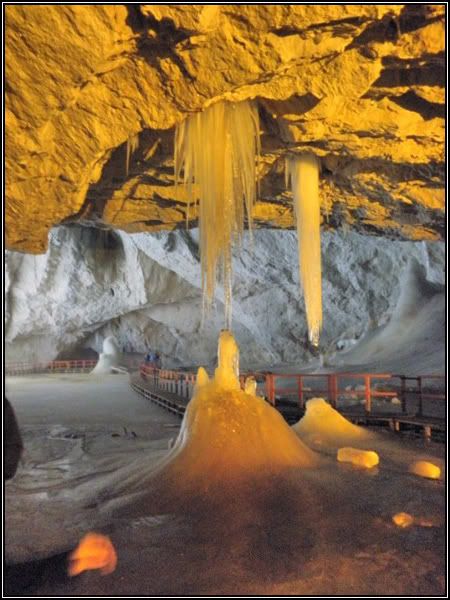

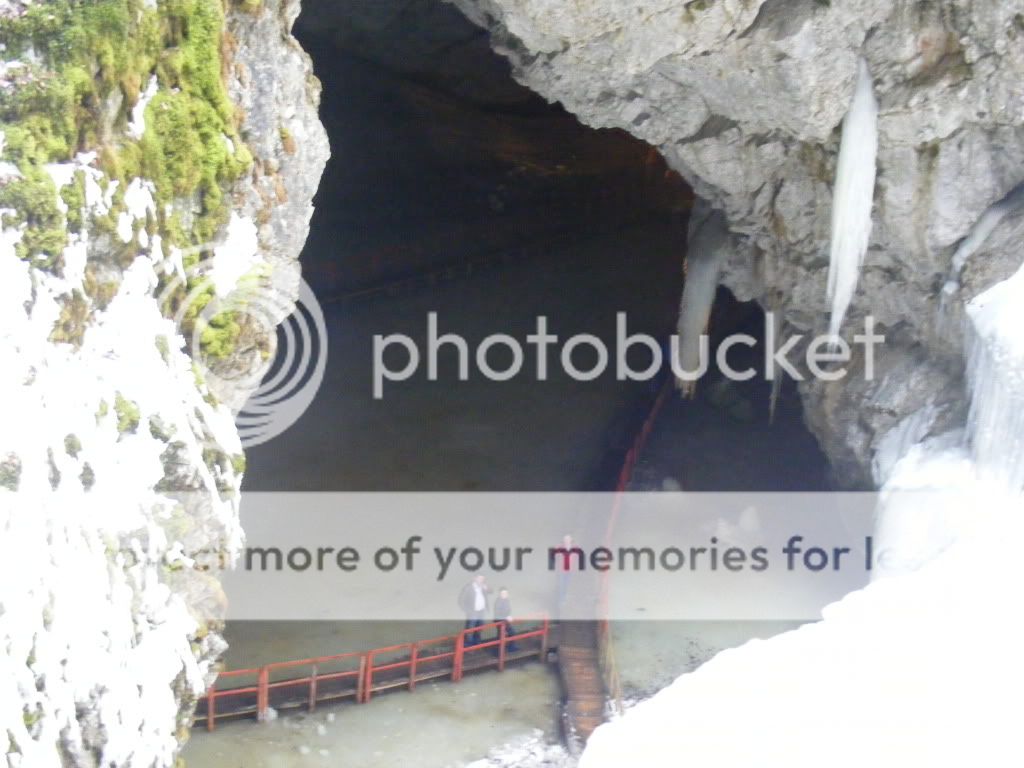






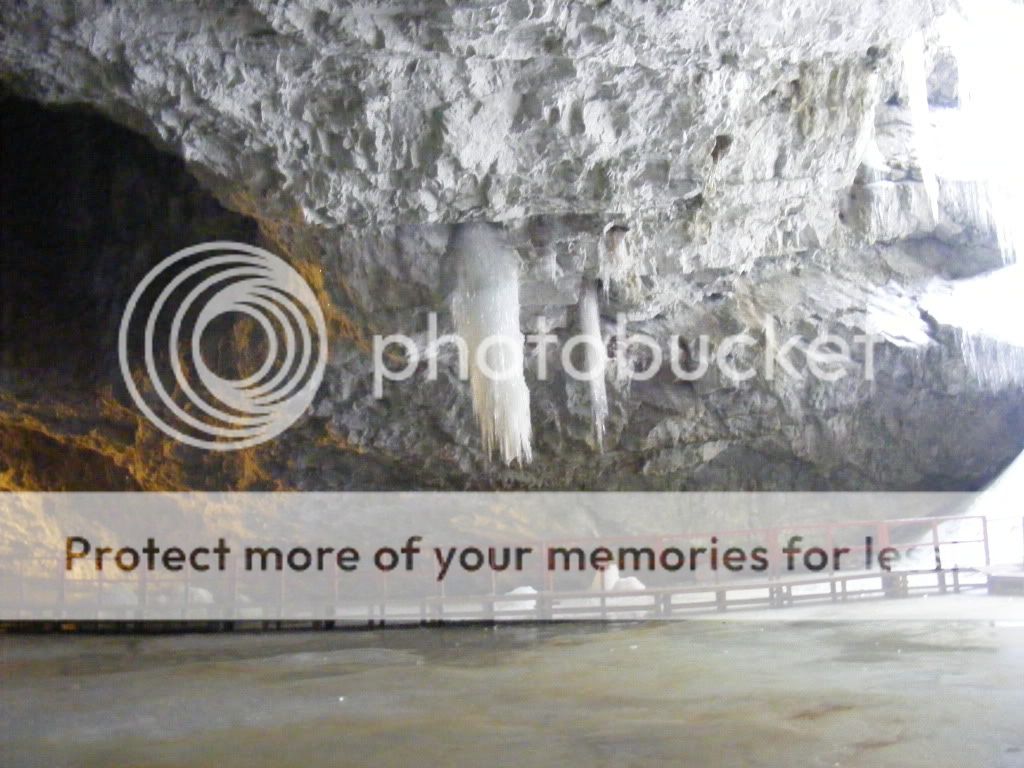
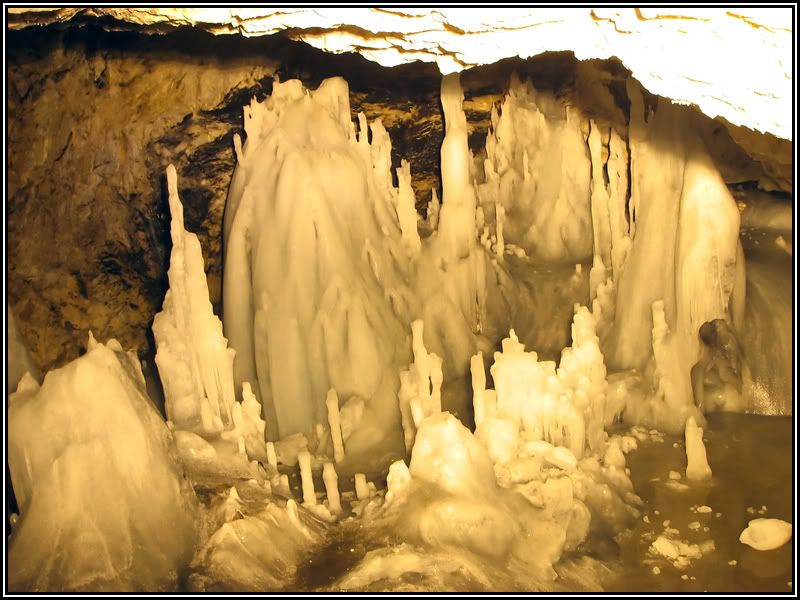
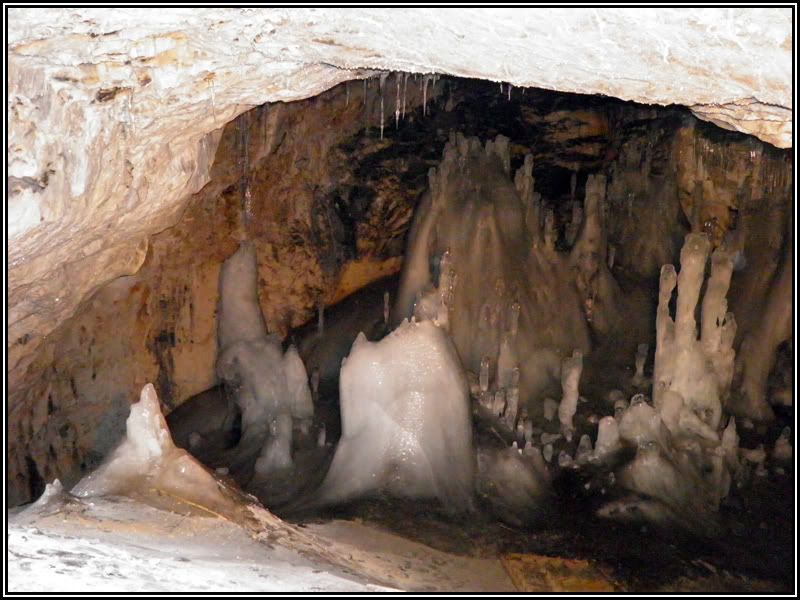

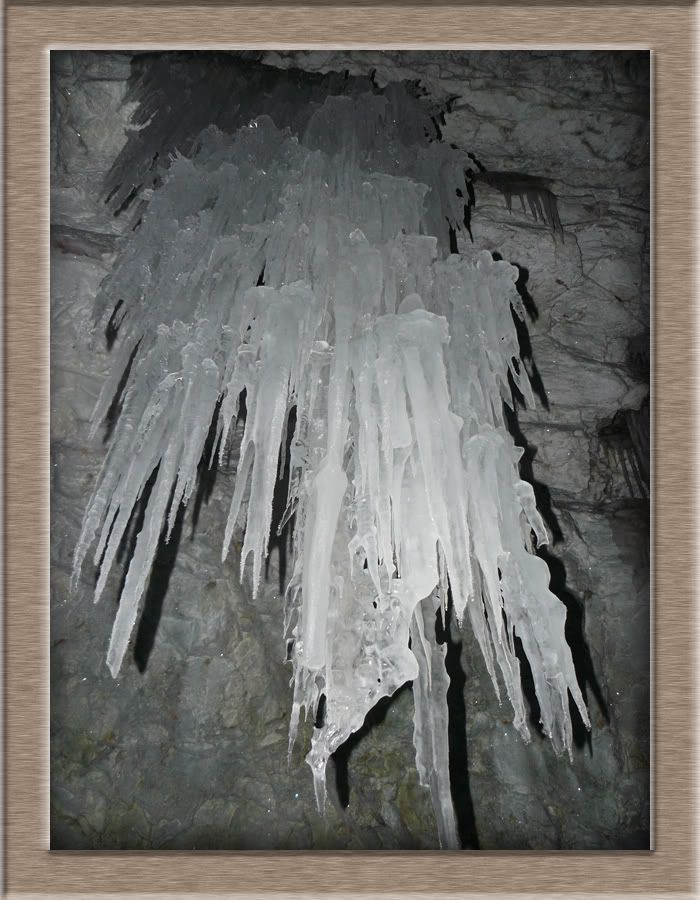


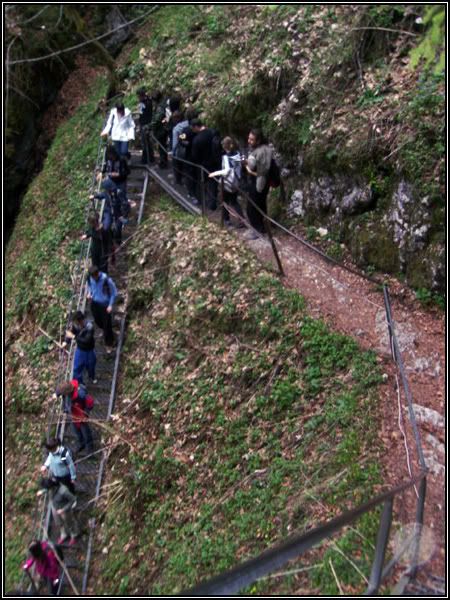

Niciun comentariu:
Trimiteți un comentariu